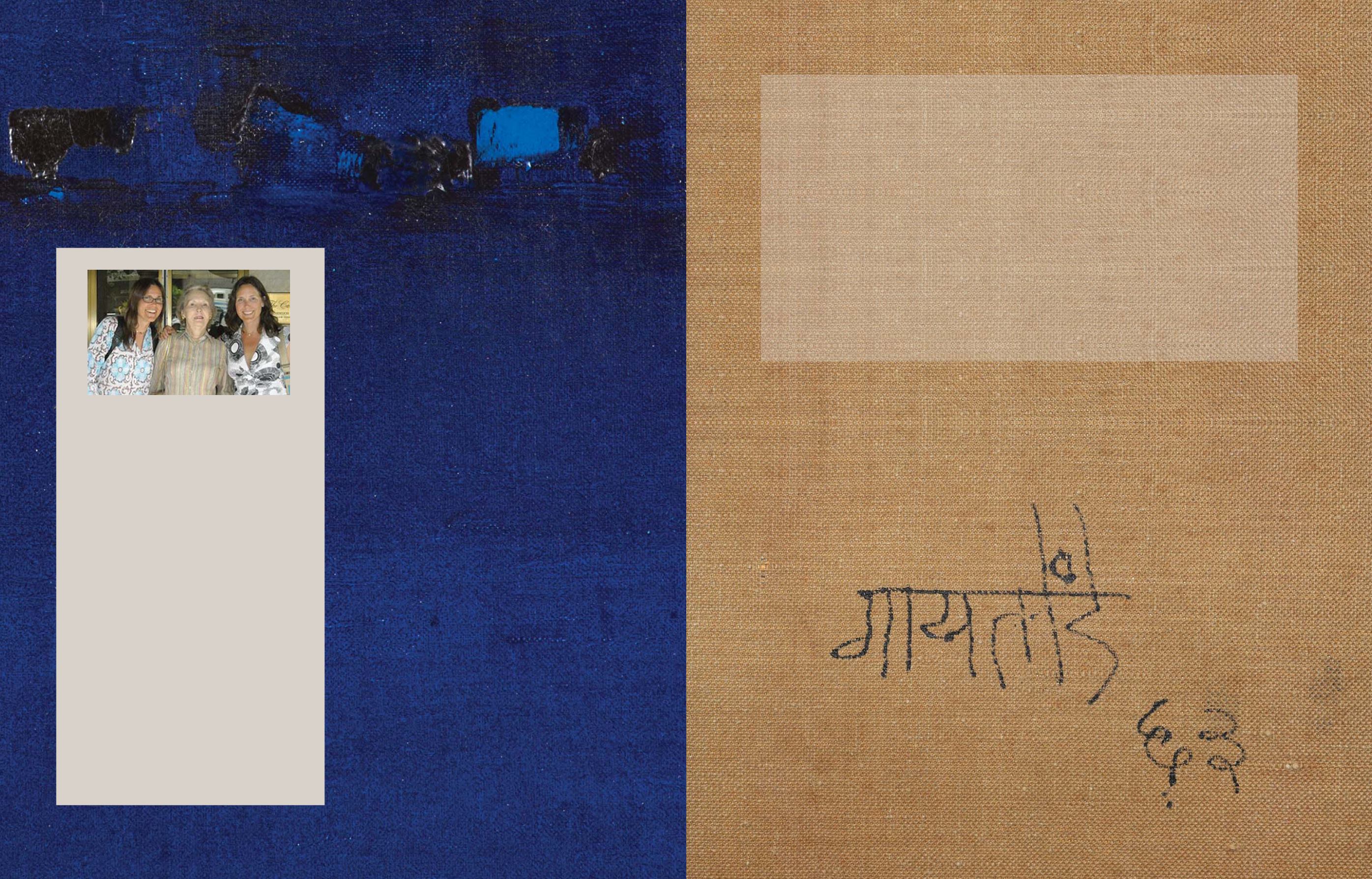

44
45
Of a similar midnight blue painting, now in
an important private collection, which was
exhibited at the Guggenheim’s
V. S. Gaitonde:
Painting as Process, Painting as Life
exhibition
in 2015, art critic Rachel Spence writes, it “was
less picture than apparition. Those sooty indigo
strata suggested a moonlit ocean, yet its untitled
state warned against narrative readings. The
elusive depths, with their sticky, luminous
burden, evoked lines by Yeats: “Like a long‒legged
fly upon the stream./ His mind moves upon
silence.” (Rachel Spence, “V. S. Gaitonde: Painting
as Process, Painting as Life, Peggy Guggenheim
Collection, Venice — ‘Meditative’,”
Financial
Times
, 22 December 2015, online)
The present lot appears to be an image of a
horizon separating a dark night sky from a
tempestuous sea, but Gaitonde’s work was
never that literal. Gaitonde’s friend, architect
Narendra Dengle recounted at a talk at the
Goa Art and Literature Festival in 2016,
that Gaitonde said, “I never draw things as
I see them.” What he painted was a deeply
personal vision of the physical world filtered
through deep interests in Zen philosophy, the
teachings of Maharshi Ramana, and the work
of Paul Klee and Abstract Expressionism. The
influences were many, but his thought process
was singular and the resulting art, unique and
enigmatic.
Inscription on the reverse of the painting
CAROLE NIMMO
BOURNE
The present lot was once part of the private
collection of Carole Nimmo Bourne, a
philanthropist from New York. Bourne travelled
with her husband, Kenneth Barnes Bourne, Jr.,
who worked with the Singer Sewing Machine
company, toAlaska, Europe, theMiddle East and
the Far East. Bourne joined the Ford Foundation
in 1960. She worked in an administrative
capacity with Oscar Harkavy, who headed
the Economic Development Administration
(EDA) Program, later known as the Population
Program, which was quite active in India in the
1960s and ‘70s. After she left the Foundation in
1978, Bourne attended courses in history and
art history, often at the Metropolitan Museum
of Art. It is likely that she acquired the present lot
during her extensive travels with her spouse or
with the Ford Foundation. Bourne succumbed
to cancer in New York in 2009.
Carole Nimmo Bourne (centre) in New York
Gaitonde graduated from the J J School of Art in 1948, and
was invited to join the Bombay Progressives in the early
1950s, when he had a studio at the Bhulabhai Desai Memorial
Institute. In the decade that followed, Gaitonde experimented
with various forms of figuration and abstraction that
showed a certain Western influence, but was also informed
by his knowledge of traditional Indian art, including murals,
miniatures and Jain manuscripts. By the early 1960s, when the
present lot was painted, Gaitonde had departed completely
from figuration, and focussed on a “non‒objective” mode of
expression. He painted with rollers and palette knives rather
than brushes, to achieve a deep, monochromatic palette, as
seen in the present lot. “He built paint up and scraped it off.
He laid it down in layer after aqueous layer, leaving stretches
of drying time in between. He said himself that much of his
effort as an artist was in the realm of thinking, planning, trying
things out. After what appeared to be unproductive periods
— he averaged only five or six paintings a year — he suddenly
plunged ahead, letting accident have a hand, as he pressed
bits of painted paper to canvas to make patterns, or placed
paint‒soaked strips of cloth on surfaces and left them there,
like patches of impasto or embroidery.” (Cotter, online)
Executed in a vertical format—an orientation he would work
with exclusively from 1968 onwards—the present lot is dark
blue, with an inky blackness across the top half of the canvas,
and smaller swatches of black at the bottom, most likely
achieved through the use of rollers. At the centre is an impasto
laden streak, with thick flecks of turquoise and black peppered
across it. “...Gaitonde was also working with painting itself. The
creation of texture in an unconventional way, the use of thick
lugubrious pigment, the evocation of light and, finally, the
subtle balancing of the image on canvas as if it were undulating
on water and gradually surfacing in the light...” (Dnyaneshwar
Nadkarni,
Gaitonde
, New Delhi: Lalit Kala Akademi, 1983,
unpaginated)


















